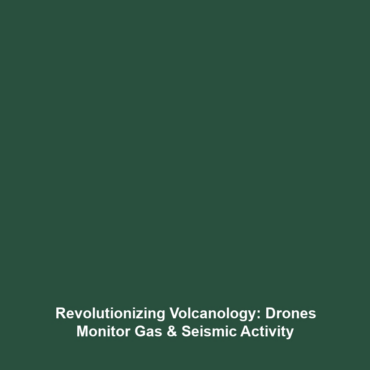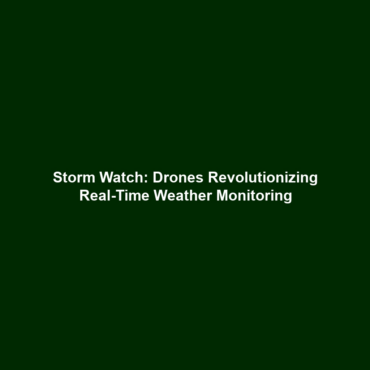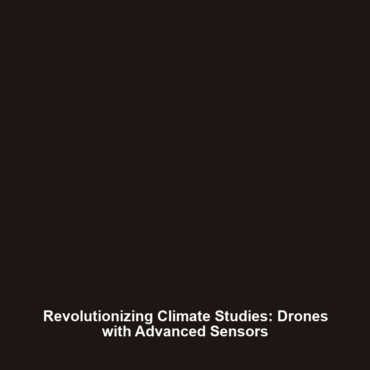How Drones Safely Monitor Volcanic Activity by Measuring Gas Emissions, Temperature, and Seismic Activity
Introduction
Drones are revolutionizing the way scientists monitor volcanic activity, providing crucial data on gas emissions, temperature, and seismic activity. These unmanned aerial vehicles (UAVs) enhance the safety and efficiency of volcanic research by collecting real-time data from hazardous environments that are typically difficult for humans to access. As a result, the integration of drones in the field of science provides profound insights into volcanic behavior, helping to predict eruptions and mitigate risks associated with volcanic activity.
Key Concepts
Understanding how drones monitor volcanic activity involves several key concepts:
Gas Emission Monitoring
Drones equipped with sensors can detect gases such as sulfur dioxide (SO2) and carbon dioxide (CO2) emitted by volcanoes. Monitoring these gases helps researchers assess volcanic health and potential eruption risks.
Temperature Measurements
Thermal imaging cameras mounted on drones allow scientists to evaluate surface temperatures. Unusual temperature increases can indicate magma movement beneath the surface.
Seismic Activity Detection
By utilizing seismic sensors, drones can effectively measure ground vibrations. Understanding seismic activity patterns is critical for forecasting eruptions.
Applications and Real-World Uses
The applications of drones in monitoring volcanic activity are vast and impactful:
- How drones measure gas emissions provide invaluable data that informs evacuation plans in at-risk areas.
- Thermal imaging drones are used in search and rescue operations in regions affected by volcanic eruptions.
- Research teams utilize UAVs for environmental assessment after an eruption, helping to plan recovery efforts.
Current Challenges
Despite significant progress, several challenges exist in the application of drones for volcanic monitoring:
- Technical Limitations: Drones face operational restrictions in extreme weather conditions, which can hinder data collection.
- Data Interpretation: The interpretation of complex data sets requires advanced algorithms and expertise.
- Regulatory Issues: Airspace regulations can limit the deployment of drones in volcanic regions.
Future Research and Innovations
Future innovations in drone technology promise to enhance the monitoring of volcanic activities:
- The development of autonomous drones capable of long-duration flights may allow for continuous monitoring.
- Improvements in sensor technology will lead to more accurate and faster data collection.
- Integration of AI and machine learning in data processing could revolutionize how researchers predict volcanic eruptions.
Conclusion
In conclusion, the use of drones to monitor volcanic activity through gas emissions, temperature, and seismic activity represents a significant advancement in the field of science. This innovative approach not only enhances our understanding of volcanic behaviors but also contributes to public safety. As research continues and technology evolves, the future of drones in monitoring environmental hazards looks promising. For further reading, explore our related articles on Gas Emissions Monitoring and Thermal Imaging Drones.


